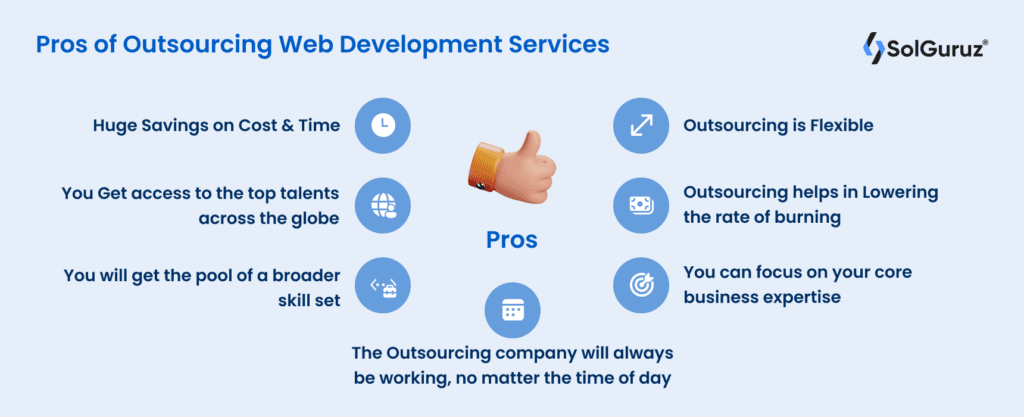
In today’s competitive and ever-evolving business landscape, technology plays a pivotal role in driving innovation and operational efficiency. Organizations are increasingly leveraging Information Technology (IT) and development services to maintain a competitive edge, optimize processes, and meet customer demands. However, managing these complex IT infrastructures and software development projects in-house can be resource-intensive, time-consuming, and costly. As a result, outsourcing IT and development services has become a viable and strategic solution for many businesses.
What is Outsourcing IT and Development Services?
Outsourcing IT and development services refers to the practice of delegating specific technology-related functions or projects to external service providers. These providers can range from specialized firms to independent contractors who offer a wide array of services such as software development, technical support, cloud computing solutions, cybersecurity, and more. This allows businesses to focus on their core competencies while relying on external expertise for their IT and development needs.
Key Benefits of Outsourcing IT and Development Services
- Cost Efficiency
One of the most significant advantages of outsourcing is cost savings. Developing and maintaining an in-house IT team requires significant financial investments in hiring, training, infrastructure, and technology. Outsourcing eliminates many of these overhead costs, providing businesses with access to skilled professionals without the burden of full-time salaries, benefits, and other related expenses. Additionally, companies can convert fixed costs into variable costs, paying only for the services they need. - Access to Global Talent Pool
Outsourcing opens the door to a global network of highly skilled IT professionals and developers. Companies can choose from a diverse talent pool, ensuring they find the right expertise for their specific projects. Whether it’s software development, cybersecurity, or cloud infrastructure, outsourcing enables businesses to tap into specialized knowledge and industry-leading practices. - Faster Time-to-Market
With the rapid pace of technological advancements, businesses must innovate quickly to stay competitive. Outsourcing accelerates the time-to-market for new products, services, and solutions by leveraging the expertise and resources of external service providers. Many outsourcing partners operate in different time zones, allowing for round-the-clock work and faster project completion. - Focus on Core Business Activities
By outsourcing non-core functions such as IT support, software development, or infrastructure management, companies can focus on their core business objectives. This enables leadership teams to allocate more time and resources to strategic initiatives, product development, and customer engagement, driving business growth. - Scalability and Flexibility
Outsourcing offers scalability, allowing businesses to expand or reduce their IT capabilities as needed. Whether it’s ramping up for a major software development project or scaling down after completing a tech rollout, outsourcing partners provide flexibility in adapting to changing business requirements. - Risk Management and Security
In today’s digital age, cybersecurity is a growing concern for businesses of all sizes. Reputable IT outsourcing providers are equipped with advanced security measures and compliance frameworks to protect data, systems, and networks. By partnering with external experts, businesses can mitigate risks associated with cyberattacks, data breaches, and regulatory non-compliance.
Challenges of Outsourcing IT and Development Services
While outsourcing offers numerous benefits, it’s essential to recognize potential challenges that can arise:
- Communication Barriers
Outsourcing, especially on a global scale, can present communication challenges due to differences in time zones, languages, and cultural expectations. Clear communication channels and regular check-ins are essential to ensure project alignment and prevent misunderstandings. - Quality Control
Outsourcing projects to external vendors can sometimes result in quality inconsistencies. It’s crucial to establish clear performance metrics and maintain oversight to ensure that the work meets the desired standards. - Data Security and Confidentiality
Handing over sensitive business information to a third party can raise security concerns. It’s vital to partner with a trusted and reputable outsourcing provider that adheres to strict data protection protocols and regulatory requirements. - Dependency on External Providers
Relying heavily on an external provider for critical IT services may lead to a loss of control over some aspects of the business. Businesses need to ensure that they have contingency plans in place and maintain flexibility in case of vendor-related issues.
Best Practices for Successful Outsourcing
To maximize the benefits of outsourcing while minimizing the risks, businesses should consider the following best practices:
- Choose the Right Partner
Conduct thorough due diligence when selecting an outsourcing provider. Consider their reputation, expertise, client testimonials, and alignment with your company’s values and goals. Look for partners with a proven track record in the specific services you need. - Establish Clear Expectations
Define the scope of work, project timelines, deliverables, and performance metrics upfront. Setting clear expectations and communicating them to the outsourcing provider ensures both parties are aligned and working toward the same goals. - Maintain Regular Communication
Open and regular communication is crucial to a successful outsourcing relationship. Utilize collaboration tools, schedule regular meetings, and provide feedback to ensure that the project is on track and any issues are addressed promptly. - Focus on Long-Term Partnerships
Rather than viewing outsourcing as a transactional relationship, focus on building long-term partnerships with your providers. Strong partnerships foster collaboration, trust, and a deeper understanding of your business needs, resulting in more successful outcomes.
Conclusion
Outsourcing IT and development services is a strategic approach that enables businesses to leverage specialized expertise, reduce costs, and stay competitive in a technology-driven world. By partnering with external providers, companies can focus on their core operations, scale their IT capabilities, and accelerate innovation. While outsourcing comes with its challenges, following best practices and selecting the right partners can help businesses navigate these challenges and achieve long-term success.

